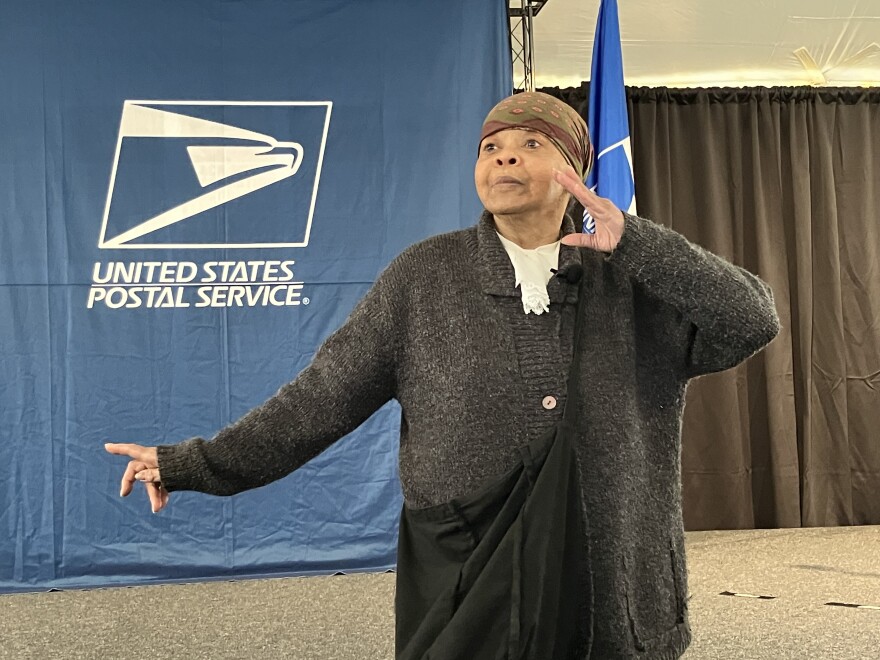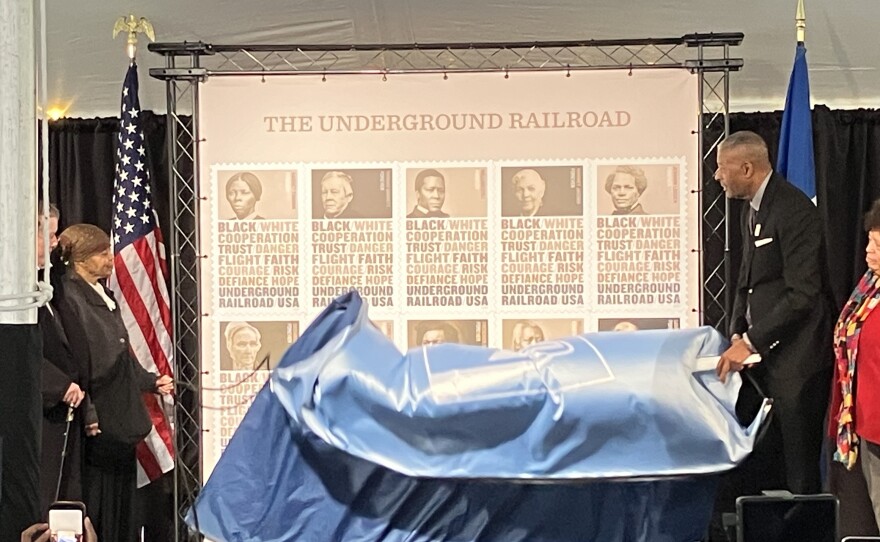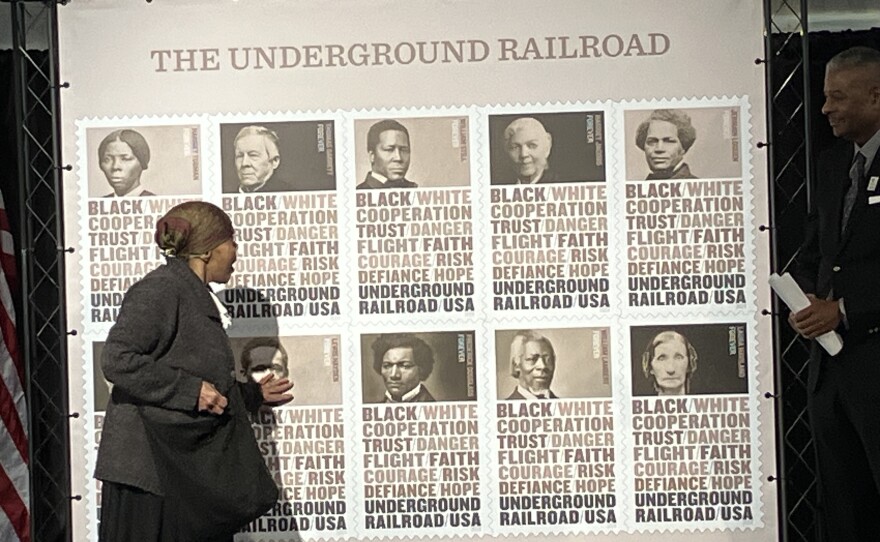Ten people, instrumental in the running of the underground railroad, are being honored on a new series of postage stamps, unveiled Saturday at the Harriet Tubman Underground Railroad Visitor Center on Maryland’s Eastern Shore.
It was a celebration of the legacy of Tubman and others, filled with music, performance, history and reflections on why knowing about the underground railroad matters today.
Ernestine “Tina” Wyatt, a third great-grandniece of Tubman’s, noted there are efforts going on “where our history is trying to be removed.”

Wyatt said the stamp “will take her name, image and reputation further to other nations as her image spans the globe with a stamp. So they can’t stop our history.”
“When you think about it, the underground railroad was one of the greatest resistance movements not only in this country, but in the world,” said The Honorable Ronald Stroman, who sits on the Board of Governors for the United States Postal Service.
Actress Millicent Sparks, portraying Tubman, said she guided her people from slavery to freedom on the underground railroad without losing a passenger. And she added the train is not getting sidetracked now.

“You woke up free this morning,” Tubman (Sparks) said. “I want you to stay free. Tell your children that too. And tell them that Harriet Tubman said so.”
The top third of each stamp depicts 10 key figures of the underground railroad, including Tubman. The lower two thirds contain the words BLACK/WHITE, COOPERATION, TRUST/DANGER, FLIGHT/FAITH, COURAGE/RISK, DEFIANCE/HOPE AND UNDERGROUND RAILROAD/USA.
Antonio Alcalá , who designed the stamps, said the work began four years ago.
“I puzzled over what to do for a long time, how to do this,” Alcalá said. “In fact it was one of the most difficult challenges that I’ve had as an art director with the postal service.”
Alcalá said the brutality and injustice of slavery is not the kind of story they tell on a stamp.
“So I put aside my sketch pad and started to read,” Alcalá said.
As he read about the underground railroad, Alcalá said he discovered it was about people risking their lives to escape enslavement and the many people who helped them.
Alcalá said, “It then dawned on me that was the story of the underground railroad: collaboration fighting injustice.”
Tubman was born enslaved in Dorchester County on the Eastern Shore in 1822. She escaped to Philadelphia in 1849, only to return many times to guide approximately 70 people to freedom.
Tubman died in 1913 in Auburn, NY.











